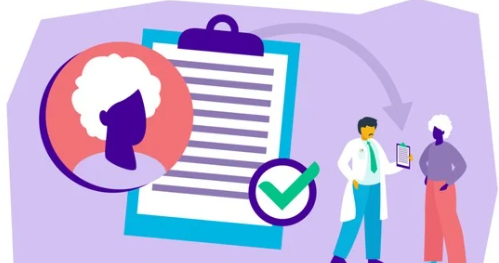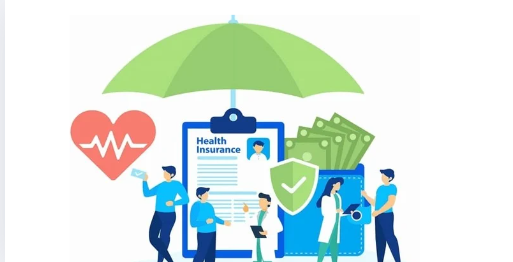
In the healthcare industry, managing the revenue cycle is crucial for ensuring the financial health of an organization. Patient billing and revenue cycle management (RCM) encompass the complete process that healthcare providers follow to receive payments for services rendered. This cycle includes everything from the initial patient registration to the final payment collection and includes interactions with insurance companies, government programs, and patients themselves. A smooth and efficient RCM process is vital to ensure consistent cash flow, minimize revenue loss, and improve overall profitability.
For many healthcare organizations, optimizing the RCM process is a challenge. The complexity of dealing with insurance claims, patient balances, regulatory requirements, and varying payer schedules can often lead to errors, delays, and poor cash flow. However, implementing effective strategies can drastically improve these processes, reduce financial risks, and enhance revenue collection. In this comprehensive blog post, we will explore strategies for improving cash flow and collections in patient billing and RCM, breaking down the necessary steps and techniques that healthcare organizations can adopt to optimize their financial operations.
1. Streamlining the Patient Registration Process
The journey to improving cash flow starts before the first bill is even generated. The patient registration process plays a pivotal role in ensuring that the rest of the RCM steps run smoothly. Many errors that cause delays or denials in payment stem from incorrect or incomplete patient information collected during registration.
Accurate Data Collection
Accurate data collection during the initial patient encounter is critical. Healthcare providers must ensure that all necessary information, including patient demographics, insurance details, and contact information, is captured correctly. Errors in this phase can lead to delayed payments, denials, or the inability to contact the patient for follow-up payments.
Insurance Verification and Eligibility Checks
Insurance verification is another vital part of the patient registration process. Before rendering services, it’s important to verify that the patient has active insurance coverage and that the specific services being provided are covered under the policy. Implementing automated insurance eligibility verification tools can streamline this process, significantly reducing the chances of claim denials and delayed payments. This verification ensures that the healthcare provider can confidently proceed with billing, knowing what will be reimbursed and what is the patient’s financial responsibility.
Pre-Authorization for High-Cost Services
For procedures that require pre-authorization or prior approval from the insurance provider, these steps should be completed early in the process. Obtaining pre-authorization ensures that the insurance company will cover the services provided, which helps avoid financial disputes down the line. Failure to secure pre-authorization can result in non-payment, leaving the patient or healthcare organization with a financial burden.
2. Improving the Coding Process
Medical coding is an essential part of the revenue cycle management process. It involves translating the clinical services provided to a patient into standardized codes that are submitted to insurance companies and other payers. Proper coding is essential to ensure correct reimbursement and avoid delays in payment.
Investing in Coding Training and Education
The healthcare industry is constantly evolving, and coding systems (e.g., ICD-10, CPT, and HCPCS codes) are regularly updated. This helps prevent coding errors that can lead to claim denials or delayed payments.
Utilizing Automated Coding Systems
Automated coding systems can enhance the accuracy of the coding process, reduce human error, and increase efficiency. These systems can identify coding mistakes in real-time, flagging them for review before claims are submitted.
3. Implementing Effective Billing Systems

Billing is a complex and time-consuming aspect of revenue cycle management. An inefficient or inaccurate billing process can result in delayed payments, billing errors, or an increase in patient complaints. Therefore, having a robust and automated billing system is critical to improving cash flow and collections.
Electronic Health Records (EHR) and Billing Integration
One of the best ways to streamline billing is to integrate electronic health records (EHR) with billing software. This integration allows for a more seamless process, reducing the time between service delivery and payment.
Timely Submission of Claims
Submitting claims promptly is a key aspect of improving cash flow. By leveraging automated systems that submit claims as soon as possible after a patient encounter, healthcare organizations can shorten the overall revenue cycle time. Delaying claim submissions can lead to aging accounts receivable (AR) and increased chances of claim denials.
Submit Clean Claims
A clean claim is one that is accurate, complete, and free from errors. Submitting clean claims reduces the likelihood of denials or rejections from insurance companies. Healthcare organizations should prioritize ensuring that all claims contain the correct information, such as accurate patient details, appropriate codes, and any required documentation or pre-authorizations.
4. Establishing an Effective Denial Management System
Claim denials are one of the biggest challenges healthcare providers faces when trying to optimize revenue cycle management. Denied claims mean that healthcare organizations won’t be paid for their services, causing cash flow issues. In fact, claim denials contribute to increased administrative costs, as claims must be resubmitted, appealed, or even written off in some cases.
Tracking Denials and Identifying Patterns
To improve cash flow, healthcare organizations should track claim denials meticulously to understand why claims are being rejected. Identifying patterns, such as frequent coding errors, lack of patient eligibility, or missing documentation, allows for targeted interventions. Addressing these issues at their source can drastically reduce the occurrence of denials and improve the overall revenue cycle.
Effective Appeals Process
For claims that are denied, having an efficient and well-documented appeals process is essential. It is vital to review the reason for denial, address any discrepancies, and re-submit the claim in a timely manner. Delays in the appeal process can lead to even longer wait times for payment and result in aging AR. Establishing a clear and efficient appeals process reduces the likelihood of lost revenue.
5. Optimize Accounts Receivable (AR) Management
Accounts receivable (AR) management refers to the process of collecting outstanding payments from both patients and insurance companies. Optimizing AR management is critical for improving cash flow and collections. Uncollected or delayed payments can significantly impact the financial health of healthcare organizations.
Monitor Aging Accounts Receivable
The longer a payment goes uncollected, the harder it is to recover the funds. By closely monitoring aging AR and identifying overdue accounts, healthcare providers can take proactive steps to address outstanding balances. Establishing clear timelines for follow-up based on the age of the receivable can ensure that collections are handled promptly and efficiently.
Proactive Follow-Up on Outstanding Payments
Rather than waiting for patients or insurance companies to initiate payment, healthcare organizations should implement a proactive follow-up strategy. This includes regular phone calls, emails, and letters reminding patients and insurance companies of outstanding balances. Proactive communication increases the likelihood of timely payments and improves the overall collection process.
Outsource Aged Receivables
For particularly difficult or aged accounts, healthcare organizations may choose to outsource collections to third-party agencies. Collection agencies specialize in recovering past-due payments, allowing the healthcare provider to focus on current claims. Although a portion of the payment will go to the agency, this can help reduce bad debt and recapture revenue that would otherwise remain uncollected.
6. Enhance Patient Communication and Engagement

Patients are key players in the revenue cycle, as they are ultimately responsible for paying their portion of medical bills (e.g., copayments, deductibles, and coinsurance). Effective communication can significantly improve cash flow by encouraging patients to pay their bills promptly.
Clear and Transparent Billing
One of the main reasons patients fail to pay their medical bills is confusion regarding the charges. Providing clear, transparent, and easy-to-understand billing statements can improve patient satisfaction and payment rates. Healthcare organizations should ensure that bills clearly break down services provided, payment responsibilities, and any outstanding balances.
Provide Multiple Payment Options
Offering patients a variety of payment methods, such as online portals, payment plans, and mobile payment options, makes it easier for them to pay their bills. Implementing flexible payment plans for patients who cannot afford to pay their balance upfront can help improve collections while also minimizing the burden on patients.
Patient Payment Engagement Tools
Incorporating automated payment reminders via SMS, email, or phone calls can help keep patients informed of their payment status and encourage timely payments. These reminders can include information about the amount due, due dates, and available payment methods.
7. Use Data Analytics to Monitor and Improve RCM Processes
Data analytics can play a pivotal role in optimizing the RCM process. By tracking and analyzing key performance indicators (KPIs), healthcare organizations can gain insights into the effectiveness of their billing, collections, and denial management strategies. Some of the most important KPIs for monitoring RCM effectiveness include:
- Days in Accounts Receivable (AR): The number of days it takes for a healthcare provider to receive payment for services rendered.
- Claim Denial Rate: The percentage of claims that are denied by insurance companies.
By regularly tracking these KPIs, healthcare organizations can identify problem areas and implement corrective measures to improve the efficiency of their revenue cycle management processes.
Conclusion
Improving cash flow and collections in patient billing and revenue cycle management is a continuous process that requires the right strategies, tools, and team efforts. By streamlining patient registration, enhancing coding accuracy, optimizing billing systems, improving denial management, and maintaining proactive communication with both payers and patients, healthcare organizations can reduce the time it takes to collect payments, reduce errors, and improve overall revenue cycle efficiency. Utilizing automation, leveraging data analytics, and adopting best practices can result in a more streamlined and profitable revenue cycle. By continually refining these strategies, healthcare organizations can enhance their financial stability and focus on providing the best possible care to their patients.